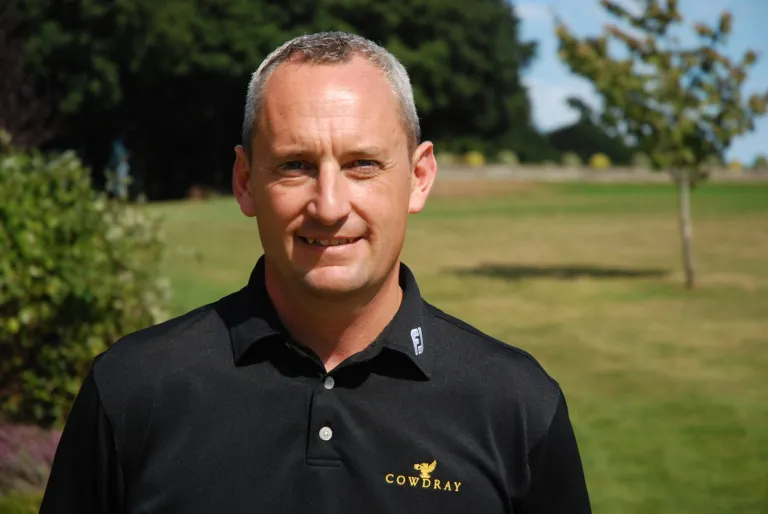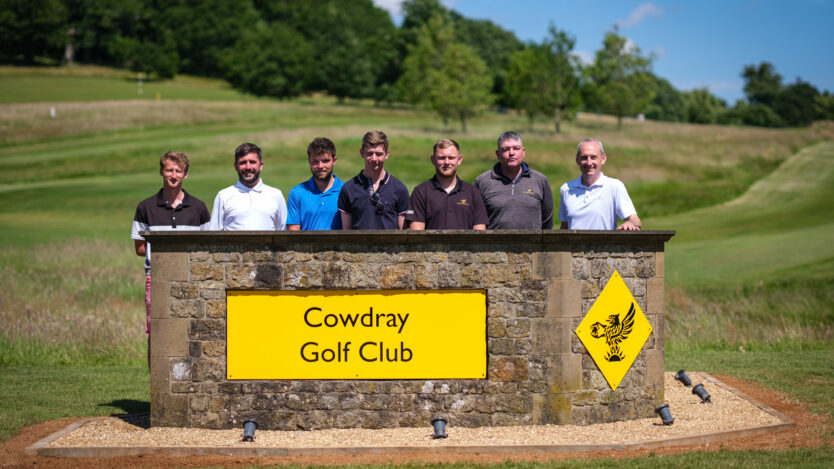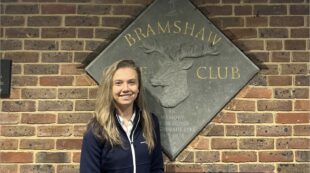Cowdray Golf Club undertook a £1million improvement plan to transform the course and facilities at the West Sussex venue.
This article is part of GCMA Insights – topical content for golf industry professionals, discussing the things that matter to those who work in golf clubs.
Director of Golf Tim Allen believes Cowdray Golf Club has been “future-proofed for generations to come” after completing a £1million improvement plan.
The West Sussex club added a new Par 3 Course and practice facilities to conclude a project in which Swan Golf Designs – led by William Swan – oversaw a transformation of its 18-hole downland course.
The most notable changes are to the bunkering, with all having been reconstructed, reshaped and integrated into the downland landscape through the use of native grass borders. A new ninth tee has been constructed and new sensitive EcoPath recycled rubber pathways have been installed throughout.
Elsewhere, Swan Golf Designs created a new ‘heart of the course’ by restoring the famed double green for holes seven and 14, created a new seating area at the halfway hut and have overseen landscape management throughout the course.
In keeping with a venue within the South Downs National Park, the landscape management work included the introduction of more native grassland areas and the removal of non-indigenous species to highlight historic oaks and traditional downland specimens.
We caught up with Tim to find out more about how the project went and what he hopes the impact will be.
Get involved in the debate.
To join the GCMA, click here, or to organise a call with a member of the GCMA team, just complete the form below.

Tim Allen, Director of Golf at Cowdray
How exciting was it to be at the forefront of such a project?
It has been an incredible experience, which I will always remember with pride. The plan effectively took two and half years from the initial thoughts to completion.
Why was this project deemed necessary and what do you hope it will achieve?
We have been proud of the consistent high quality of the condition of the greens and fairways here at Cowdray for the past few years. Full credit to Jonathan Smith, Course Manager, and the team for this, however, the elements in the project had fallen below the standard of the rest of the course. Specifically, these areas are the bunkers, pathway network and Par 3 Course.
How would you describe the difference in the ‘Cowdray experience’ for guests and members since the work was undertaken?
We sincerely hope that the experience is significantly elevated. Whether it is enjoying the new bunkers (if possible!), playability, aesthetics, navigating the course on safer pathway networks or enjoying the fun element of the Par 3 Course and sharpening up that short game. The project has future-proofed the course for generations to come.
WHY JOIN THE GCMA?
Membership of the GCMA unlocks a network of like-minded professionals, provides you with support in your professional and personal development, and provides you with a multitude of benefits. Whether that’s the tools that will help you to excel in your profession, or a wide range of services to support your wellbeing, signing up to the GCMA is joining a community.
Did all run smoothly or were there some setbacks to contend with?
The weather was without doubt the largest factor. The contractors, Profusion, were fantastic to work with and they really kept going as well as possible. Our sandy soil was hugely beneficial for the project, although we still had lost days during the programme. Managing play throughout the winter period was also challenging as we operated with just a maximum of two temporary greens in play at any one time. The members were fantastic and very much engaged throughout, which was positive.
What would be your best advice to fellow GCMA members who find themselves at the start of a sizeable project?
Prepare for the all-consuming aspect of a project of this scale. Every day is naturally busy in our roles, however, make sure you plan for a variety of challenges that you may not be aware of yet! Also, ensure that your team around you are aware of the scale of the challenge and what the implications are during the project operationally.
How much did sustainability factors play into this project?
We are working towards our GEO accreditation, so the project had plenty of elements that we were looking to achieve. One major part of the design was acknowledging the original and encouraging the wider use of no mow areas of longer fescues. We used harvested roughs from the course to frame each bunker to provide that natural look, which was in turn framed by the no mow areas. This reduction in mowing patterns an inputs has always been an ambition, but now fits the course from a design point too.
This article is part of GCMA Insights – topical content for golf industry professionals, discussing the things that matter to those who work in golf clubs.
Enquiries
"*" indicates required fields



